Key Takeaways
-
Effective Homemade Traps: DIY traps with overripe fruit, vinegar, wine, soap, candles, or sticky surfaces work well for capturing gnats.
-
Identifying Gnat Attractants: Gnats are drawn to moisture, fermenting substances, dirty drains, damp plants, and food residues.
-
Trap Placement Matters: Place traps near sinks, fruit bowls, trash bins, plants, and lights for maximum effectiveness.
-
Nighttime Trapping: Candle and water traps work well at night by attracting gnats to the light source.
-
Prevention is Essential: Control moisture, store food properly, clean drains, and dispose of waste to stop gnat infestations.
How to Catch Gnats in Your House
If you’re wondering how to trap gnats or how to catch gnats in your house, this guide will provide practical solutions to help you deal with gnat pests effectively. Let’s understand these traps in detail.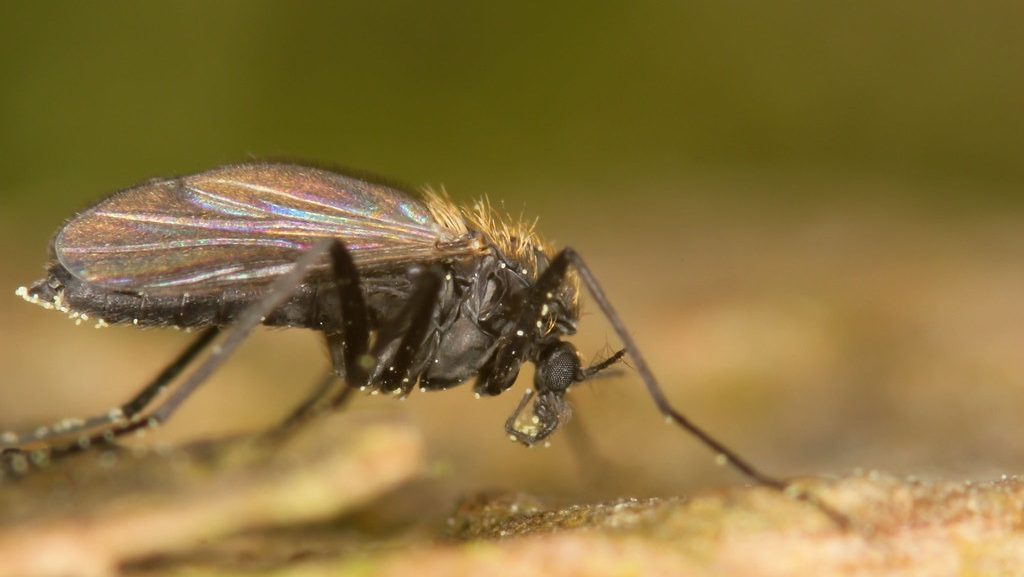
Fruit Trap (Effective for kitchen and pantry areas)
If you’re wondering how to trap gnats using everyday kitchen items, the fruit trap is one of the simplest and most effective options. Gnats are highly attracted to the sweet, fermented smell of overripe fruit.DIY Overripe Fruit Gnat Trap
This simple homemade trap uses overripe fruit to attract and capture gnats, helping to reduce their population naturally.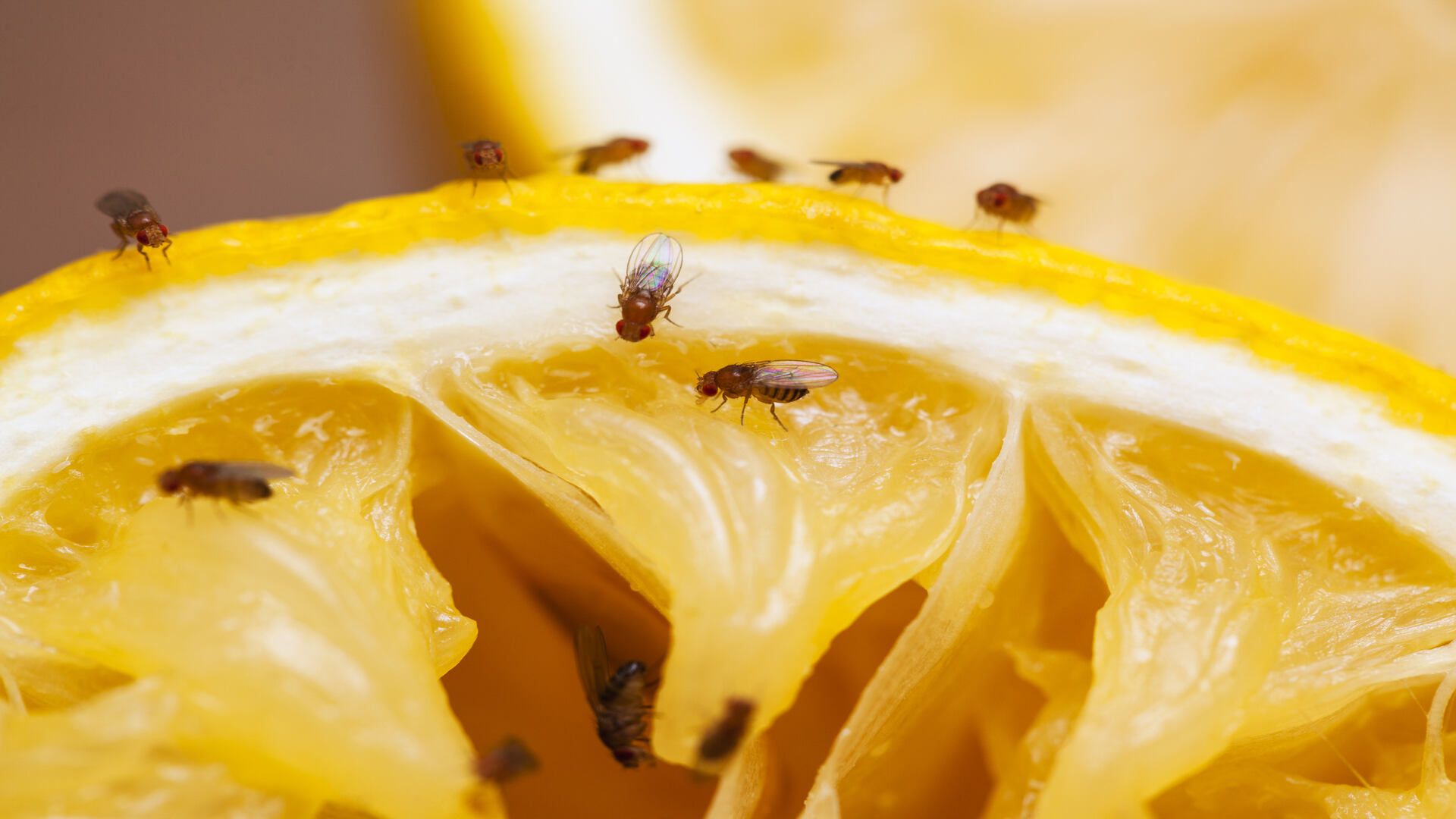

Not getting a solution?
Get your free pest control estimate today!INSTRUCTIONS
1. Prepare the Trap
- Place a piece of overripe fruit (like a banana, mango, or apple) inside a small bowl or container.
2. Cover with Plastic Wrap
- Cover the bowl tightly with plastic wrap and secure it with a rubber band.
3. Create Entry Holes
- Use a toothpick, fork, or sharp object to poke small holes in the plastic wrap. The holes should be just large enough for gnats to enter but small enough to prevent them from escaping.
PLACEMENT TIPS
-
Where to Place It: Position this trap near kitchen counters, fruit baskets, houseplants, or areas where you notice the most gnat activity.
Note
Place multiple traps around your home for better results. Replace the fruit as needed to maintain effectiveness.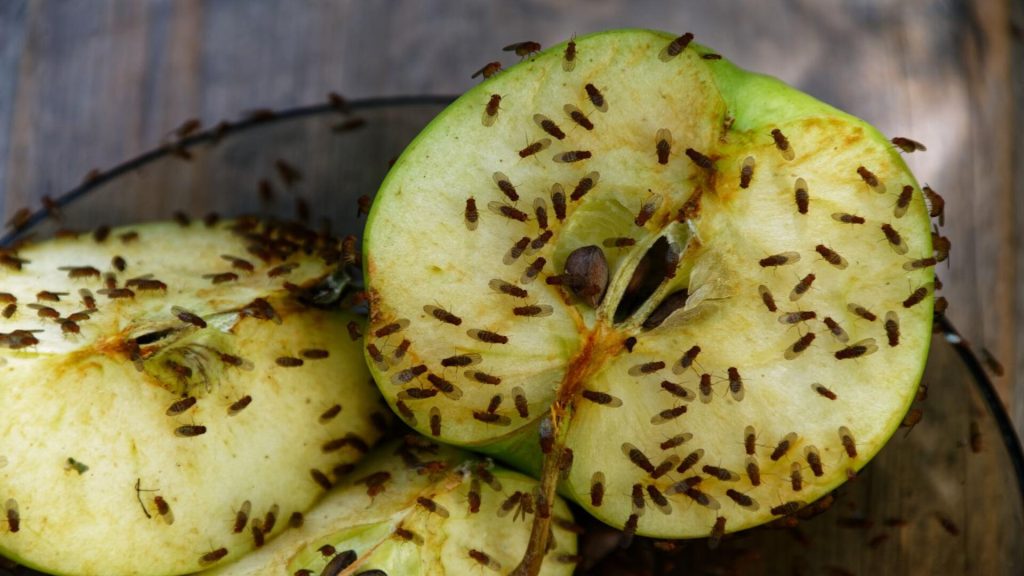
Soap and Water Trap (Best for use near sinks and drains)
If you’re looking for a simple way to learn how to catch gnats in your house, the soap and water trap is a tried-and-true method. It reduces water surface tension, causing gnats to sink and drown.DIY Soapy Water Gnat Trap
This simple water-based trap helps catch and eliminate gnats by using dish soap to break surface tension, preventing them from escaping.
INSTRUCTIONS
1. Fill the Bowl
- Fill a shallow bowl or dish with water (about halfway).
2. Add Dish Soap
- Add a few drops of liquid dish soap and stir gently to mix it in.
3. Place Near a Light Source
- Position the dish near a bright light source (like a desk lamp or a windowsill) where gnats are most active.
PLACEMENT TIPS
-
Where to Place It: Set the trap near kitchen sinks, bathroom drains, windows, or any other light source where gnats tend to gather.
Note
For best results, replace the trap daily and keep it near light sources where gnats are most active.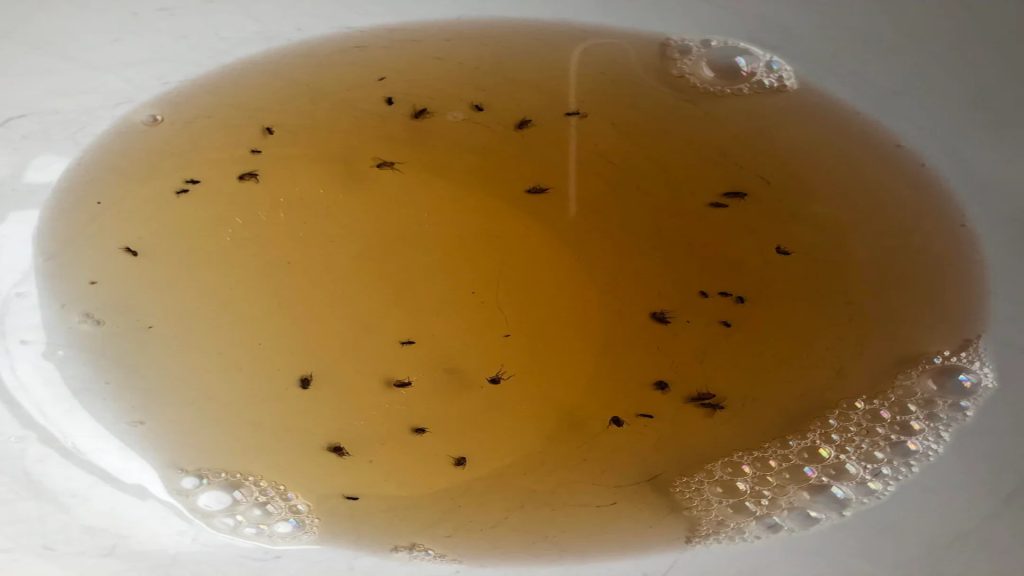
How to Catch Gnats With Vinegar: Apple Cider Vinegar Trap
If you’re searching for how to catch gnats with vinegar, this is one of the most effective methods. Gnats are naturally drawn to the smell of fermentation, and apple cider vinegar provides the perfect bait.DIY Apple Cider Vinegar Gnat Trap
This simple yet effective homemade trap uses apple cider vinegar to attract gnats, while dish soap and plastic wrap help capture them.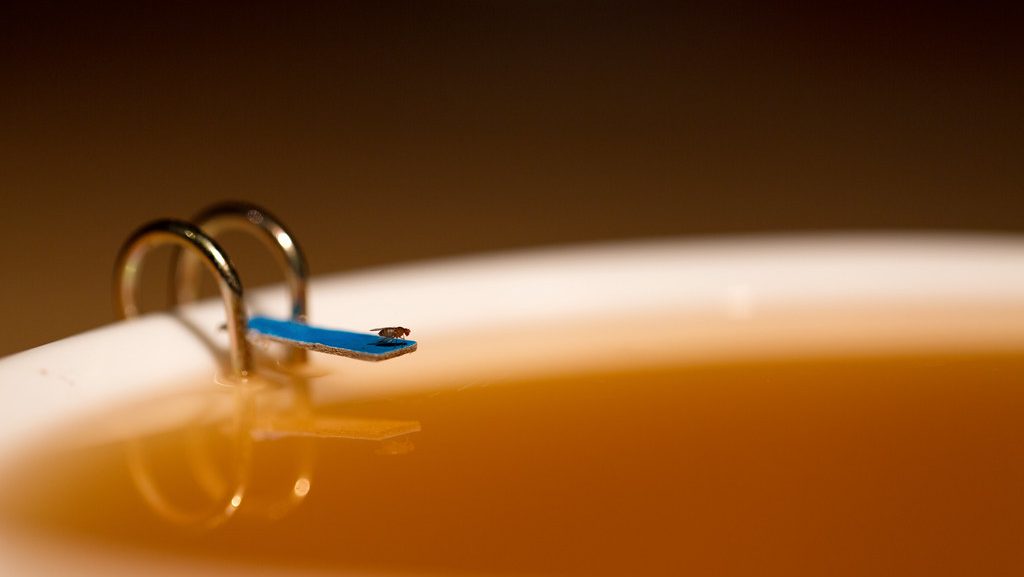
INSTRUCTIONS
1. Fill the Container
- Fill a small jar, glass, or cup with apple cider vinegar (about halfway).
2. Add Dish Soap
- Add a few drops of dish soap to the vinegar to reduce surface tension.
3. Cover with Plastic Wrap
- Cover the jar with plastic wrap and secure it with a rubber band.
4. Poke Entry Holes
- Poke small holes in the plastic wrap to allow gnats to enter.
HOW IT WORKS
-
Attracts and Traps Gnats: The sweet, tangy smell of apple cider vinegar draws gnats in, and the dish soap ensures they sink and drown upon contact.
PLACEMENT TIPS
-
Where to Place It: Set the trap near trash cans, sinks, and food preparation areas where gnats are most active.
Note
Replace the trap every few days to maintain effectiveness and reduce gnat populations.Wine or Beer Trap (Perfect for areas with fermenting smells)
If you’ve run out of vinegar, but still want to catch gnats in your house, you can use stale wine or beer as a substitute. Gnats are attracted to the fermentation process, making this method highly effective.DIY Stale Wine or Beer Gnat Trap
This trap uses the fermented scent of wine or beer to attract gnats, while plastic wrap helps contain them.
INSTRUCTIONS
1. Pour Wine or Beer
- Pour stale wine or beer into a small bowl or container, filling it about halfway.
2. Cover with Plastic Wrap
- Securely cover the container with plastic wrap and fasten it with a rubber band.
3. Poke Entry Holes
- Use a toothpick or fork to poke small holes in the plastic wrap, allowing gnats to enter but preventing them from escaping.
PLACEMENT TIPS
-
Where to Place It: Position this trap near kitchen counters, sinks, and food waste bins where gnats are most active.
Note
Replace the trap every few days for optimal effectiveness in reducing gnat populations.DIY Candle and Water Gnat Trap
This nighttime trap uses candlelight to attract gnats, leading them into a water-filled bowl where they become trapped.
INSTRUCTIONS
1. Fill a Bowl with Water
- Place a shallow bowl filled with water on a flat surface.
2. Place a Candle in the Bowl
- Put a small candle (like a tea light) in the middle of the bowl.
3. Turn Off Other Lights & Light the Candle
- Turn off all other lights in the room and light the candle to attract gnats.
PLACEMENT TIPS
-
Where to Place It: Use this trap in dark rooms with minimal lighting, such as kitchens and bathrooms, where gnats are most active at night.
Note
Use caution when handling an open flame, and never leave the candle unattended.DIY Sticky Trap for Gnats
This simple and low-maintenance trap uses sticky surfaces to catch gnats, reducing their population effectively.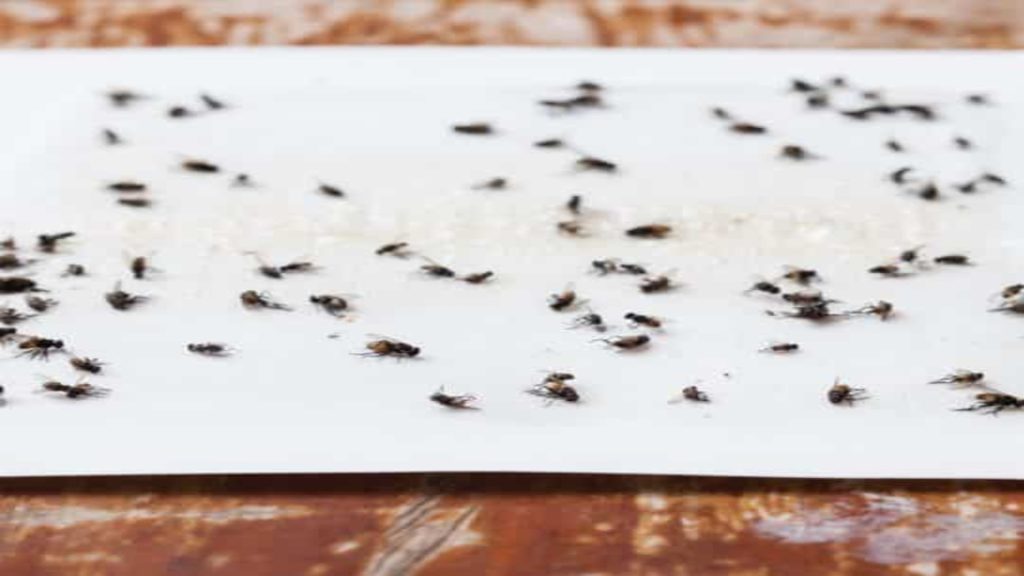
INSTRUCTIONS
1. Get or Make a Sticky Trap
- Purchase yellow sticky traps online or create your own using yellow index cards coated with honey, sugar syrup, or petroleum jelly.
2. Place the Sticky Cards
- Position the sticky traps near houseplants, fruit baskets, windows, or other areas where gnats gather.
PLACEMENT TIPS
-
Where to Place It: Place sticky traps near houseplants, window sills, and areas where gnats are frequently seen.
Note
Replace sticky traps regularly to maintain effectiveness and ensure they remain free of dust and debris.Why Gnats Are a Problem?
Gnats are a problem because they thrive in moisture-rich environments like overwatered houseplants, dirty drains, and areas with leftover food or sugary residues, making them difficult to control. While they don’t usually bite, gnats can contaminate food, spread bacteria, and compromise household hygiene. The rapid reproduction cycle of gnats can lead to large infestations, creating a nuisance and posing potential health risks. Prompt action is essential to prevent their spread and maintain a clean, sanitary living space.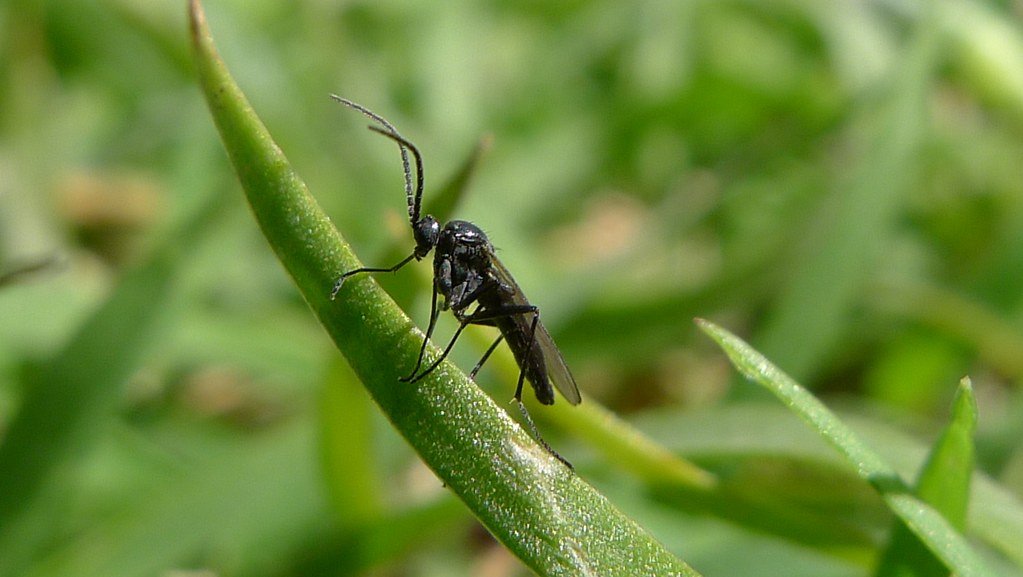
How to Prevent Gnats from Coming Back
Prevention is essential to avoid re-infestation after trapping gnats. Follow these tips:Preventative Measures to Keep Gnats Away
-
Avoid Overwatering Plants
-
Clean Drains and Sinks
-
Dispose of Food Waste
-
Store Produce Properly
-
Fix Leaks
Myth vs. Fact About Gnats
| Myth | Fact |
|---|---|
| Vinegar traps kill all gnats instantly. | Vinegar traps are effective but may take several days to eliminate all gnats in an area. |
| Gnats only infest dirty homes. | Gnats are attracted to moisture and organic material, not cleanliness. Even clean homes can face infestations. |
| Gnats are the same as fruit flies. | While they look similar, gnats are different species and have distinct behaviors and breeding habits. |
| Chemical sprays are the only way to get rid of gnats. | Natural solutions like vinegar traps and proper cleaning are often just as effective. |





